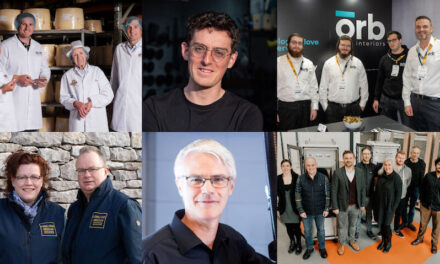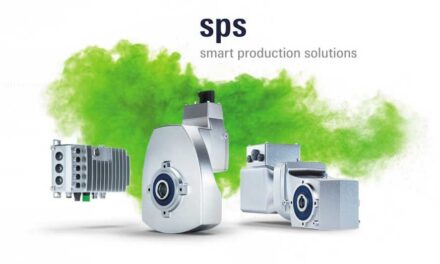 High-cost robotic assets are often incorrectly identified as a high energy consumption technology, but OEMs can offer the opposite, deploying the latest robotic technology to improve sustainability and deliver more value to customers.
High-cost robotic assets are often incorrectly identified as a high energy consumption technology, but OEMs can offer the opposite, deploying the latest robotic technology to improve sustainability and deliver more value to customers.
By Jocelyn Golding, OEM, Industrial SI & IAD Channel Marketing Manager, Schneider Electric
For a long-time industrial robotics have been perceived by many as a high energy consumption technology, that have a negative impact on reaching sustainability goals. While this may have been true before digitalisation, modern robotics can actually provide an immense contribution to achieving sustainability goals. Continuous operation, heavy payloads, speed, redundant systems, and complex programming are all factors which drove additional energy consumption, but now through advancements in design are all capabilities that offer high performance, reduced operational costs, and ultimately aid industrial businesses of any size meet sustainability goals.

 There is an opportunity for OEMs to package end-to-end integrated robotic solutions that are simple to implement with any end user facility, essentially delivering improved sustainability as part of their expert offering. The potential of industrial robots is that they can improve the circular economy, while OEMs can support the entire lifecycle of the asset. Greater precision and accuracy reduce the number of raw materials used, creating an immediate sustainability benefit, and delivering cost savings to the end user. By leading on sustainability improvements, OEMs can differentiate themselves in the market and create a competitive advantage. This is especially relevant when the end user is a manufacturer as sustainability-conscious shoppers are rebounding to 22% compared with 18% in 2022 and 22% in 2021. Further, 43% of respondents to the survey by Kantar say that financial constraints are making it harder for them to act sustainability, creating another opportunity for OEMs to provide a pathway to reduced production costs which can lead to savings on the final product for the end user.
There is an opportunity for OEMs to package end-to-end integrated robotic solutions that are simple to implement with any end user facility, essentially delivering improved sustainability as part of their expert offering. The potential of industrial robots is that they can improve the circular economy, while OEMs can support the entire lifecycle of the asset. Greater precision and accuracy reduce the number of raw materials used, creating an immediate sustainability benefit, and delivering cost savings to the end user. By leading on sustainability improvements, OEMs can differentiate themselves in the market and create a competitive advantage. This is especially relevant when the end user is a manufacturer as sustainability-conscious shoppers are rebounding to 22% compared with 18% in 2022 and 22% in 2021. Further, 43% of respondents to the survey by Kantar say that financial constraints are making it harder for them to act sustainability, creating another opportunity for OEMs to provide a pathway to reduced production costs which can lead to savings on the final product for the end user.
 Providing sustainable solutions with industrial robotics can move the OEM relationship from that of a vendor-customer one to a partnership. Pick-and-place applications with Delta robots, or linear Cartesian robots using a framework to distribute the weight of the load are two examples that will build a long-term and supportive relationship that prioritises efficiency, optimisation, and most of all sustainability. OEMs utilising this will help promote repeat business but also make any machine builder the first choice for businesses looking to improve their environmental credentials.
Providing sustainable solutions with industrial robotics can move the OEM relationship from that of a vendor-customer one to a partnership. Pick-and-place applications with Delta robots, or linear Cartesian robots using a framework to distribute the weight of the load are two examples that will build a long-term and supportive relationship that prioritises efficiency, optimisation, and most of all sustainability. OEMs utilising this will help promote repeat business but also make any machine builder the first choice for businesses looking to improve their environmental credentials.
Sustainability is an increasing consideration for businesses across the industrial spectrum while a tightening regulatory environment and the pressure of reaching Net Zero 2050 targets makes it a business priority for manufacturers at small single facilities to multi-site global enterprises.
As the enablers and leaders of innovation, OEMs are uniquely positioned to deploy cutting-edge solutions that leverage the full potential of digitalisation. The initial investment cost of robotics may seem like a roadblock to adoption but when weighed against the short- and long-term benefits, OEMs can easily show a pathway to a Return on Investment throughout the lifecycle of an asset, future-proofing the product as well as the relationship with the end user. As businesses seek to advance their sustainability credentials, the OEMs that have proven experience with industrial robotics will be better positioned for future success.
Industrial robots and cobots can automate and streamline complex processes, even when working alongside human operators. By deploying this technology, it can easily remove repetitive and labour-intensive tasks from the expert operator, creating more time for value-adding activities and moving into a supervisory role, directly minimising the impact of the growing skills gap and labour shortages seen in the industry. The flexibility and adaptability of industrial robotics enhance each asset, and even full production lines to quickly reconfigure and accommodate changes or product personalisations with minimal disruption. Precision and accuracy also serve the sustainability goals, reducing defects and errors, resulting in higher-quality products, reduced costs and lower risk of reputational damage associated with output quality. The latest robotic solutions generate vast amounts of data which creates another opportunity for OEMs to extend their relationship with the end user, combining with an interoperable system that can work alongside any existing assets, and OEMs can enter any facility and present a strong business case for continuous operational improvement.
Every capability discussed in this article is achievable today, OEMs partnering with Schneider Electric have the opportunity to optimise end user operations while futureproofing and offering a strong return on investment. OEMs leveraging industrial robotics within their offering position themselves as competitive and forward-thinking in the crowded market. By establishing themselves as sustainability driven, OEMs can quickly become the first choice for businesses large and small, actively participating in the industry’s collective responsibility to reduce environmental impact.
OEMs can unleash the power of industrial robotics with The Future of Automation IDC report, available for download on the Schneider Electric website – se.com



